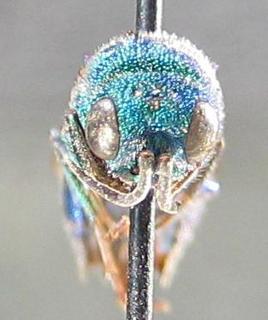
Native Bee Inventory and Monitoring Lab; Photographer: Erika Tucker · 1
Chrysis venusta, face |
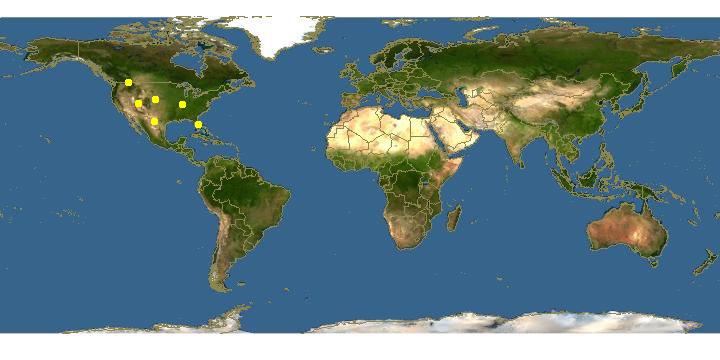
Click on map for details about points.
|
80x5 -
240x3 -
240x4 -
320x1 -
320x2 -
320x3 -
640x1 -
640x2
Set display option above.
Click on
images to enlarge. |
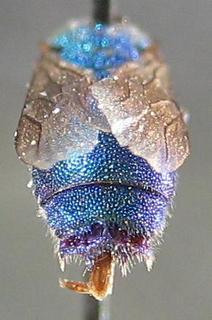
Native Bee Inventory and Monitoring Lab; Photographer: Erika Tucker · 1
Chrysis venusta, tail |
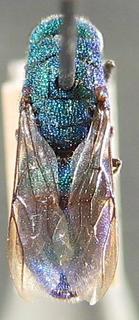
Native Bee Inventory and Monitoring Lab; Photographer: Erika Tucker · 1
Chrysis venusta, top |
|
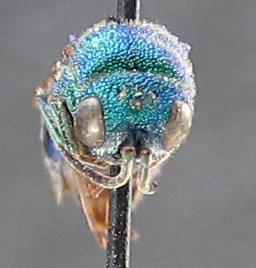
Native Bee Inventory and Monitoring Lab; Photographer: Erika Tucker · 1
Chrysis venusta. face |
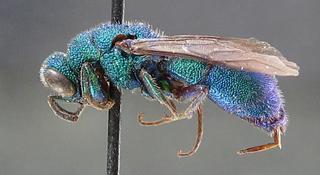
Native Bee Inventory and Monitoring Lab; Photographer: Erika Tucker · 1
Chrysis venusta |
|
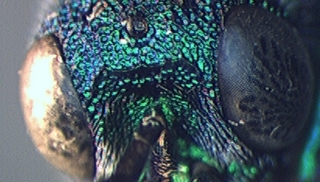
Native Bee Inventory and Monitoring Lab; Photographer: Erika Tucker · 1
Chrysis venusta, face |
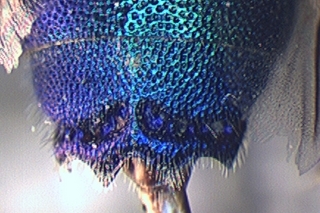
Native Bee Inventory and Monitoring Lab; Photographer: Erika Tucker · 1
Chrysis venusta, tail |
|
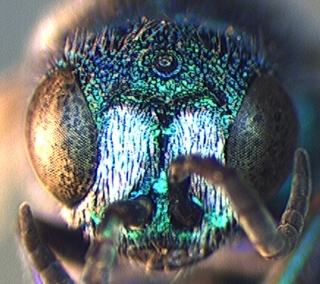
Native Bee Inventory and Monitoring Lab; Photographer: Erika Tucker · 1
Chrysis venusta, male, face |
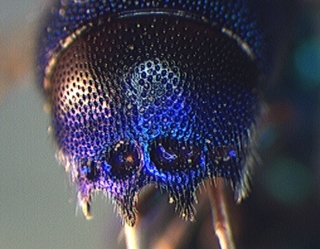
Native Bee Inventory and Monitoring Lab; Photographer: Erika Tucker · 1
Chrysis venusta, tail |
|
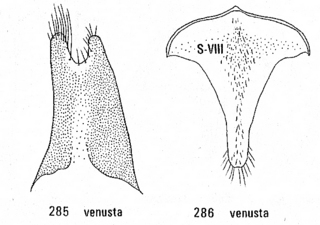
R. M. Bohart L. S. Kimsey, 1982 · 1
Chrysis venusta, male genitalia |
|
Overview |
Taken from:
R. M. Bohart and L. S. Kimsey. 1982. A Synopsis of the Chrysididae in America North of Mexico.
Chrysis venusta Cresson
(Figs. 285, 286)
Chrysis venusta Cresson 1865:311. Holotype male, Texas (ANSP).
Chrysis presidialis Mocsary 1912:565. Holotype male, Presidio, Chihuahua, Mexico (Budapest). New synonymy.
Discussion: In venusta the somewhat thinner and more punctate median ridge of the pit row as well as the marginally longer malar space (1.0 MOD or a little more) will usually separate this species from astralia. Reference to male genitalia, including venustella, will be more critical. C. venusta has the paramere more shallowly saddled with the inner part more bluntly rounded and both parts setose (fig. 285).
Material examined: 100 males including types, 87 females.
Distribution: Widespread in the U.S. west of the Mississippi River; also recorded from Chihuahua, Jalisco, Morelos, Chiapas, Oaxaca, Mexico D. F., Zacatecas, Yucatan and Guatemala. We have no verified records from California or Oregon.
Species group of Chrysis venusta Cresson
Diagnosis: Male F-I shorter than F-III, longer than F-II, about as long as broad, female F-I 1.5-2.2 times as long as broad; subantennal distance 1.0-1.2 MOD and longer than malar space which is 0.5-1.0 MOD: transverse frontal carina distinct, regular, complete to near compound eye, not curved inward below, faint backward branches sometimes visible; male scapal basin with dense silvery appressed hair; genal carina separated from eye; midocellus at most weakly lidded; mesopleuron and metanotum rather simple; T-II with a median longitudinal ridge sometimes indicated but micropunctate; T-III distally double edged and with four teeth, lateral edge concave in male and straight in female, no distinct prepit bulge; male genitalia with paramere rather sharply cleft (figs. 284, 285, 287), S-VIII with a moderately narrowed tail (fig. 286).
Included species: astralia Bohart, venusta Cresson, venustella Bohart.
Discussion: The double edged T-III is a prominent character and is distinguishing when taken in conjunction with the short male F-I, dense silvery hair of the male scapal basin, absence of a prepit bulge on the four toothed T-III, and a short malar space. Hosts are unknown.
Key to Chrysis venusta group
T-III with pit row median ridge depressed so that it appears notched in lateral view
.venustella Bohart
T-III with pit row median ridge not depressed or only slightly so
venusta Cresson
..astralia Bohart
|
|
| Supported by | |
Updated: 2024-04-26 14:06:33 gmt
|